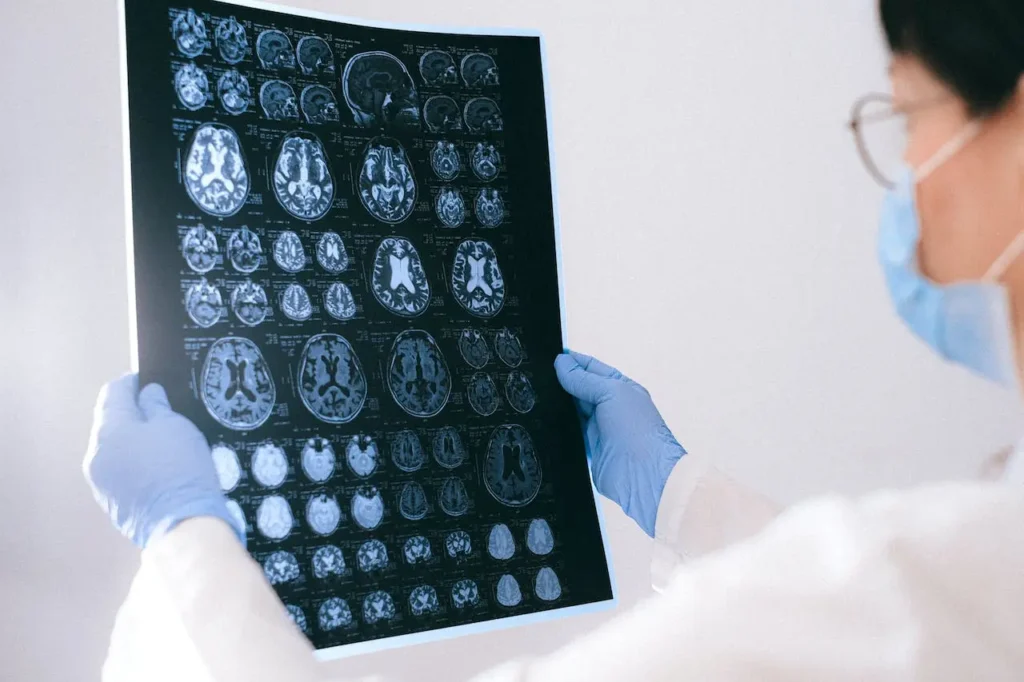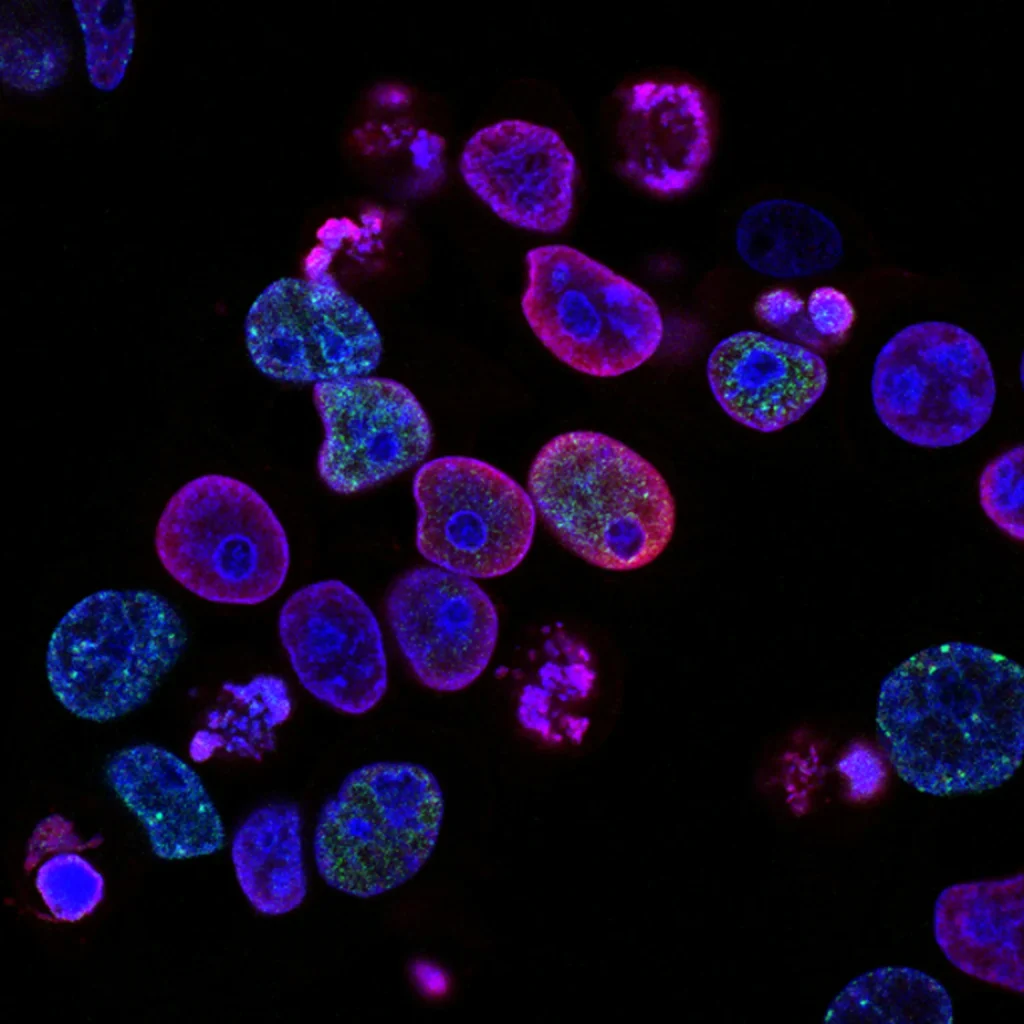Skeletal Dysplasia, Kidney, Cervical, and Hip Dysplasia

- What is Dysplasia?
- Causes and Risk Factors of Dysplasia
- Symptoms and Signs of Dysplasia
- Diagnosis and Screening Methods for Dysplasia
- Treatment Options for Dysplasia
- Prevention and Management of Dysplasia
- Living with dysplasia – coping strategies and support
- Research and advancements in dysplasia treatment
- Medicare Plans for Dysplasia
- Conclusion
- Frequently Asked Questions (FAQs)
What is Dysplasia?
This post may contain affiliate links, meaning I may earn a commission if you make a purchase, at no extra cost to you. I only recommend products I trust. Thank you for your support.
Dysplasia is a medical condition that affects various parts of the body, including bones, organs, and tissues.
It is characterized by abnormal development or growth, leading to structural abnormalities.
There are different types of dysplasia, each affecting specific areas of the body.
Some common types include skeletal dysplasia, kidney dysplasia, developmental dysplasia of the hip, cervical dysplasia, and hip dysplasia in dogs.
Skeletal Dysplasia
Skeletal dysplasia, also known as osteochondrodysplasia, is a group of disorders that affect bone and cartilage development. It can lead to abnormalities in bone shape, size, and density.
There are over 400 types of this type of dysplasia, each with its unique characteristics and severity.
Some common forms include achondroplasia, hypochondroplasia, and osteogenesis imperfecta.
Skeletal dysplasia can cause short stature, joint pain, and skeletal deformities.
Treatment options vary depending on the specific type and severity of the condition.
Kidney Dysplasia
Kidney dysplasia, also called renal dysplasia, is a condition where the internal structures of one or both kidneys do not develop properly before birth. It is usually a congenital condition, meaning it is present at birth.
Kidney dysplasia can range from mild to severe, and it may cause one or both kidneys to be enlarged and filled with cysts.
This can lead to impaired kidney function and potentially result in high blood pressure and kidney failure.
Treatment options for this dysplasia focus on managing symptoms and preserving kidney function. In severe cases, a kidney transplant may be necessary.
Developmental Dysplasia of the Hip
Developmental dysplasia of the hip (DDH) is a condition where the hip joint does not develop correctly during infancy.
It can occur due to various factors, including abnormal hip joint development in the womb or certain postnatal conditions.
DDH can range from mild instability of the hip joint to complete dislocation. If left untreated, it can lead to long-term hip problems and early-onset osteoarthritis.
Treatment options for DDH include the use of braces, harnesses, or splints to help stabilize the hip joint. In some cases, surgery may be required to correct the hip joint alignment.
Cervical Dysplasia
Cervical dysplasia is a condition characterized by abnormal changes in the cells of the cervix, which is the lower part of the uterus that connects to the vagina.
It is often caused by a human papillomavirus (HPV) infection. Cervical dysplasia is typically detected through routine Pap smears or HPV tests.
The severity of cervical dysplasia is classified into different grades, ranging from mild (low-grade) to severe (high-grade).
Treatment options for cervical dysplasia include watchful waiting, cryotherapy, laser therapy, conization, or surgery, depending on the severity and progression of the condition.

Hip Dysplasia in Dogs
Hip dysplasia is a common condition in dogs, particularly in certain breeds.
It occurs when the hip joint does not develop correctly, leading to abnormal hip joint structure and function.
Hip dysplasia can cause pain, lameness, and loss of mobility in affected dogs.
Treatment options for hip dysplasia in dogs include medications for pain management, weight management, and physical therapy.
In severe cases, surgical interventions such as total hip replacement or femoral head ostectomy.
Understanding the different types of dysplasia is crucial for recognizing the specific challenges individuals or animals may face.
By delving deeper into each type, we can gain a better understanding of their causes, risk factors, symptoms, and available treatment options.
Causes and Risk Factors of Dysplasia
Dysplasia can have various causes and risk factors depending on the type.
While some forms of dysplasia are primarily genetic, others may result from environmental factors or a combination of both.
Let’s explore the causes and risk factors associated with each type of dysplasia:
Skeletal Dysplasia
The causes of skeletal dysplasia can vary depending on the specific disorder.
In many cases, skeletal dysplasia is caused by genetic mutations that affect the production or structure of proteins involved in bone and cartilage development.
Some forms of skeletal dysplasia are inherited in an autosomal dominant or autosomal recessive manner, while others may occur spontaneously.
Kidney Dysplasia
The exact cause of kidney dysplasia is often unknown. However, certain genetic mutations and environmental factors can contribute to its development.
Some risk factors for kidney dysplasia include maternal drug use, exposure to toxins during pregnancy, and certain genetic syndromes.
Developmental Dysplasia of the Hip
Developmental dysplasia of the hip can have several contributing factors.
It is more common in females and often associated with breech presentation during pregnancy.
Other risk factors include a family history of hip dysplasia, swaddling techniques that restrict hip movement, and certain hormonal imbalances.
Cervical Dysplasia
Cervical dysplasia is primarily caused by certain strains of the human papillomavirus (HPV).
HPV is a sexually transmitted infection that can lead to abnormal cell changes in the cervix.
Risk factors for cervical dysplasia include early sexual activity, multiple sexual partners, smoking, and a compromised immune system.
Hip Dysplasia in Dogs
Hip dysplasia in dogs is primarily a genetic condition. It is more common in large and giant breeds, as well as certain small breeds.
Rapid growth, excessive weight gain, poor nutrition, and certain environmental factors can exacerbate the condition.
Breeding dogs with good hip scores and promoting a healthy lifestyle can help reduce the risk of hip dysplasia in dogs.
By understanding the causes and risk factors associated with dysplasia, individuals and pet owners can take appropriate measures to prevent or manage the condition effectively.
Early detection and intervention are essential for a better prognosis.
Symptoms and Signs of Dysplasia
Recognizing the symptoms and signs of dysplasia is crucial for early detection and timely intervention.
While the specific symptoms can vary depending on the type of dysplasia, there are some common signs to be aware of.
Let’s explore the symptoms associated with each type of dysplasia:
Skeletal Dysplasia
The symptoms can vary widely depending on the specific disorder.
Common signs include short stature, disproportionate limb lengths, abnormal spine curvature, joint deformities, and impaired mobility.
Some forms of skeletal dysplasia may also affect other organs, leading to additional symptoms.
Kidney Dysplasia
In many cases, kidney dysplasia does not cause noticeable symptoms unless it leads to kidney failure.
However, some individuals may experience abdominal pain, high blood pressure, urinary tract infections, or blood in the urine.
In infants, symptoms may include a swollen abdomen and failure to thrive.
Developmental Dysplasia of the Hip
The signs of can vary depending on the severity. In mild cases, there may be no obvious symptoms.
However, as the condition progresses, signs such as hip instability, limited hip abduction, leg length discrepancy, and a clicking or popping sensation in the hip joint may become apparent.
Cervical Dysplasia
Cervical dysplasia typically does not cause noticeable symptoms.
However, in some cases, individuals may experience abnormal vaginal bleeding, especially after sexual intercourse or during menstruation.
Advanced cervical dysplasia may manifest as pelvic pain, pain during intercourse, or unusual vaginal discharge.
Hip Dysplasia in Dogs
Dogs with hip dysplasia may exhibit various symptoms, including lameness, difficulty in rising or climbing stairs, reluctance to exercise, muscle wasting in the hind legs, and a noticeable swaying gait.
Some dogs may also show signs of pain or discomfort when touched around the hip area.
Diagnosis and Screening Methods for Dysplasia
Accurate diagnosis and screening methods are crucial for identifying dysplasia and determining the most appropriate course of action.
Depending on the type of dysplasia, various diagnostic tools and procedures may be used.
Let’s explore the common methods employed for diagnosing and screening dysplasia:
Skeletal Dysplasia
The diagnosis of skeletal dysplasia usually involves a combination of physical examination, medical history review, and imaging studies. X-rays, and ultrasound.
Genetic testing may be utilized to assess bone and cartilage abnormalities, measure bone density, and identify specific genetic mutations.
Kidney Dysplasia
This dysplasia is typically diagnosed through prenatal ultrasounds or imaging studies performed after birth.
In some cases, genetic testing may be necessary to determine the underlying cause. Additional tests, such as blood tests and urine analysis, may be conducted to evaluate kidney function.
Developmental Dysplasia of the Hip
Diagnosis of developmental dysplasia often involves a physical examination, medical history review, and imaging studies.
Ultrasound is commonly used for infants under six months of age, while X-rays are preferred for older infants, children, and adults. These tests help evaluate the position and stability of the hip joint.
Cervical Dysplasia
This is typically detected through regular Pap smears or cervical screening tests.
Abnormal results may prompt further diagnostic procedures, such as colposcopy, biopsy, or HPV testing.
These tests help determine the extent of cell changes and identify any precancerous or cancerous cells.
Hip Dysplasia in Dogs
The diagnosis of hip dysplasia in dogs involves a thorough physical examination, medical history review, and imaging studies.
X-rays, specifically the PennHIP or OFA methods, are commonly used to assess hip joint laxity and detect signs of dysplasia. Sedation may be necessary for accurate positioning during the X-ray.
Timely and accurate diagnosis is essential for developing an effective treatment plan and implementing appropriate management strategies.
If you suspect dysplasia, consult with a healthcare professional or veterinarian to initiate the diagnostic process.
Treatment Options for Dysplasia
Treating dysplasia varies depending on the type and severity of the condition.
While some forms of dysplasia may be managed conservatively, others may require surgical intervention or ongoing medical treatment.
Let’s explore the treatment options available for each type of dysplasia:
Skeletal Dysplasia
Treatment for skeletal dysplasia focuses on managing symptoms and optimizing quality of life.
This may involve a multidisciplinary approach, including orthopedic interventions, physical therapy, assistive devices (e.g., braces, walkers), pain management strategies, and psychological support.
In some cases, surgical interventions, such as limb lengthening procedures, may be considered.

Kidney Dysplasia
The treatment of kidney dysplasia depends on the severity and symptoms.
In mild cases, regular monitoring and conservative management may be sufficient.
However, more severe cases may require medication, dietary modifications, and, in some cases, surgical intervention or kidney transplant.
Developmental Dysplasia of the Hip
Treatment for developmental dysplasia aims to promote normal hip joint development and stability.
In infants, non-surgical interventions such as the use of a Pavlik harness or a hip abduction brace may be recommended.
For older children or adults, surgical procedures, such as closed reduction or hip osteotomy, may be necessary to reposition or stabilize the hip joint.
Cervical Dysplasia
Treatment for this dysplasia depends on the severity of cell changes and may include watchful waiting, repeat Pap smears, colposcopy, cryotherapy, laser therapy, cone biopsy, or surgical removal of the affected tissue.
If cervical dysplasia progresses to cervical cancer, additional treatments such as radiation therapy, chemotherapy, or surgery may be required.
Hip Dysplasia in Dogs
The treatment of hip dysplasia in dogs depends on the severity of symptoms, age, and overall health.
Mild cases may be managed with weight management, exercise modification, physical therapy, and pain medications.
More severe cases may require surgical interventions, such as femoral head ostectomy (FHO), total hip replacement, or juvenile pubic symphysiodesis (JPS).
It is important to consult with healthcare professionals or veterinarians to determine the most appropriate treatment options for dysplasia.
Each case is unique, and a tailored approach is necessary for optimal outcomes.
Seeking treatment from reputable medical centers or veterinary clinics that specialize in dysplasia can provide the best care for individuals or animals affected by this condition.
Prevention and Management of Dysplasia
While some forms of dysplasia cannot be prevented due to genetic or developmental factors, there are measures individuals and pet owners can take to reduce the risk or manage the condition effectively.
Let’s explore prevention and management strategies for dysplasia:
Skeletal Dysplasia
As many forms of skeletal dysplasia are genetic, it is crucial to seek genetic counseling before planning a family.
This can help individuals understand the risk of passing on the condition to their children and explore options such as preimplantation genetic diagnosis (PGD) or adoption.
Early intervention, regular medical follow-ups, physical therapy, and assistive devices can help manage symptoms and optimize quality of life.
Kidney Dysplasia
Preventing this dysplasia may not always be possible, especially if it is caused by genetic factors.
However, certain lifestyle choices during pregnancy, such as avoiding smoking, alcohol, and certain medications, can help reduce the risk.
Regular monitoring, maintaining a healthy lifestyle, and adhering to medical recommendations can help manage kidney dysplasia effectively.
Developmental Dysplasia of the Hip
Parents and caregivers can take preventive measures to reduce the risk of developmental dysplasia of the hip.
This includes avoiding swaddling techniques that restrict hip movement, supporting proper hip positioning during infancy, and seeking regular medical check-ups.
Early detection and intervention are crucial for successful management.
Cervical Dysplasia
The best prevention for cervical dysplasia is vaccination against the human papillomavirus (HPV).
HPV vaccines are highly effective in preventing infection with the most common strains that cause cervical dysplasia and cervical cancer.
Regular cervical screening tests, such as Pap smears, are also essential for early detection and intervention.
Hip Dysplasia in Dogs
Responsible breeding practices can help reduce the incidence of hip dysplasia in dogs.
Choosing breeding pairs with good hip scores and ensuring proper nutrition and exercise for puppies can help minimize the risk.
Regular veterinary check-ups, weight management, and appropriate exercise routines are crucial for managing hip dysplasia in dogs.
By focusing on prevention and implementing effective management strategies, individuals and pet owners can take an active role in reducing the impact of dysplasia.
It is important to stay informed, seek professional advice, and make necessary lifestyle adjustments to ensure the best possible outcomes.
Living with dysplasia – coping strategies and support
Living with dysplasia can present unique challenges, both physically and emotionally.
Coping strategies and support systems can significantly improve the quality of life for individuals with dysplasia and their loved ones.
Seeking Support
Connecting with others who have similar experiences can provide emotional support and valuable insights.
Support groups, both online and in-person, can be excellent resources for individuals with dysplasia and their families.
These groups offer a safe space to share experiences, exchange coping strategies, and find solace in knowing that they are not alone in their journey.
Physical Therapy and Rehabilitation
For individuals with dysplasia affecting their musculoskeletal system, physical therapy can play a crucial role in managing symptoms and improving mobility.
A skilled physical therapist can design a personalized exercise program to strengthen muscles, improve joint stability, and enhance overall function.
Rehabilitation may also involve assistive devices, such as braces or orthotics, to support proper alignment and reduce discomfort.
Emotional Well-being
Living with dysplasia can sometimes lead to emotional challenges, such as frustration, anxiety, or feelings of self-consciousness.

Seeking professional mental health support, such as counseling or therapy, can be beneficial in addressing these emotional concerns.
A mental health professional can help individuals develop coping strategies, build resilience, and navigate the emotional impact of living with dysplasia.
Below are some of the organizations that support dysplasia individuals.
- Hip Dysplasia International (HDI): HDI is a global organization that may have resources and support groups for individuals dealing with hip dysplasia. Check their website or contact them for more information.
- Cervical Dysplasia Support Forum on Inspire: Inspire hosts an online support forum specifically for cervical dysplasia. Members can share experiences, ask questions, and provide support to one another.
- Fibrous Dysplasia Foundation: The Fibrous Dysplasia Foundation offers support and resources for individuals affected by fibrous dysplasia. Their website has information on support groups or communities.
Research and advancements in dysplasia treatment
Medical research is continuously advancing, leading to new treatment options and improved outcomes for individuals with dysplasia.
Ongoing research and technological advancements have the potential to revolutionize the management of dysplasia in various fields.
Genetic Research
In the case of certain dysplastic conditions, such as skeletal dysplasia, ongoing genetic research plays a vital role in understanding the underlying causes and potential treatment targets.
Genetic testing and advancements in gene therapy hold promise for future interventions that may correct genetic abnormalities or mitigate their effects.
Surgical Innovations
Surgical techniques and technologies continue to advance, providing more precise and effective treatment options for dysplasia-related conditions.
Minimally invasive procedures, such as arthroscopy, have revolutionized the treatment of developmental dysplasia of the hip, allowing for smaller incisions, reduced scarring, and faster recovery times.
Regenerative Medicine
The field of regenerative medicine focuses on harnessing the body’s natural healing abilities to repair damaged tissues and organs.
Stem cell therapy and tissue engineering techniques show promise in treating dysplasia-related conditions by promoting tissue regeneration and functional restoration.
Ongoing research aims to refine these approaches and bring them into clinical practice.
Medicare Plans for Dysplasia
Medicare plans typically cover a range of medical services and treatments, including those related to health conditions like dysplasia.
The selection of Medicare plans for specific coverage related to dysplasia is contingent upon the particular type of dysplasia diagnosed and the prescribed treatments recommended for effective management.
Here are some general points regarding Medicare coverage for dysplasia:
- Diagnostic Services: Medicare covers diagnostic services, such as screenings and tests, to identify and diagnose dysplasia.
- Treatment Options: If dysplasia requires medical treatments like surgeries, medications, or other interventions, Medicare may cover these services.
- Specialist Visits: Visits to specialists, such as oncologists or gynecologists, for the management of dysplasia, may be covered by Medicare.
- Preventive Services: Medicare emphasizes preventive care, so certain preventive services that can help manage or prevent dysplasia may be covered.
- Part B Coverage: Many dysplasia-related services fall under Medicare Part B, which covers outpatient care, preventive services, and certain types of treatment.
It’s crucial to review the specific details of your Medicare plan, as coverage can vary.
Consulting with healthcare providers and contacting Medicare directly can provide more accurate and personalized information based on your situation.
Conclusion
Dysplasia is a complex medical condition that can affect various parts of the body.
Understanding the different types of dysplasia and the available treatment options is crucial for individuals living with dysplasia and their loved ones.
Seeking support, both emotional and physical, can significantly improve the quality of life for those affected by dysplasia.
Ongoing research and advancements in medical treatments offer hope for improved outcomes and potential interventions in the future.
Find out why cantaloupe is a great addition to your dog’s diet.
Benefits of physical therapy and assistive devices that can help you.
You may also want to explore COPD, comfort care, therapy dogs for emotional support, and respite care options to address the physical, emotional, and spiritual needs associated with dysplasia or consider home care agencies in your area.
Frequently Asked Questions (FAQs)
What causes dysplasia?
Dysplasia can have various causes, depending on the specific type. Some forms of dysplasia are genetic, while others may be caused by environmental factors, infections, or developmental issues.
Can dysplasia be prevented?
In some cases, preventive measures can reduce the risk of certain types of dysplasia. For example, avoiding exposure to certain chemicals or infections during pregnancy can help lower the risk of developmental dysplasia of the hip.
Is dysplasia treatable?
Treatment options for dysplasia vary depending on the specific type and severity. Some forms of dysplasia can be managed with supportive measures, while others may require medications, surgical interventions, or ongoing medical care.
Can dysplasia be cured?
The possibility of a cure for dysplasia depends on the individual condition and its underlying causes. While some dysplastic conditions can be managed effectively, others may require lifelong management and care.
Can dysplasia be hereditary?
Yes, certain types of dysplasia have a hereditary component. Genetic counseling can help individuals and families understand the potential risks and inheritance patterns associated with specific dysplastic conditions.
Note: This article is for informational purposes only and should not be taken as medical advice If you or a loved one is living with dysplasia, remember that support and resources are available.
Reach out to support groups, healthcare professionals, and genetic counselors to access the information and assistance you need.
Consult with your healthcare provider for personalized guidance and recommendations.




